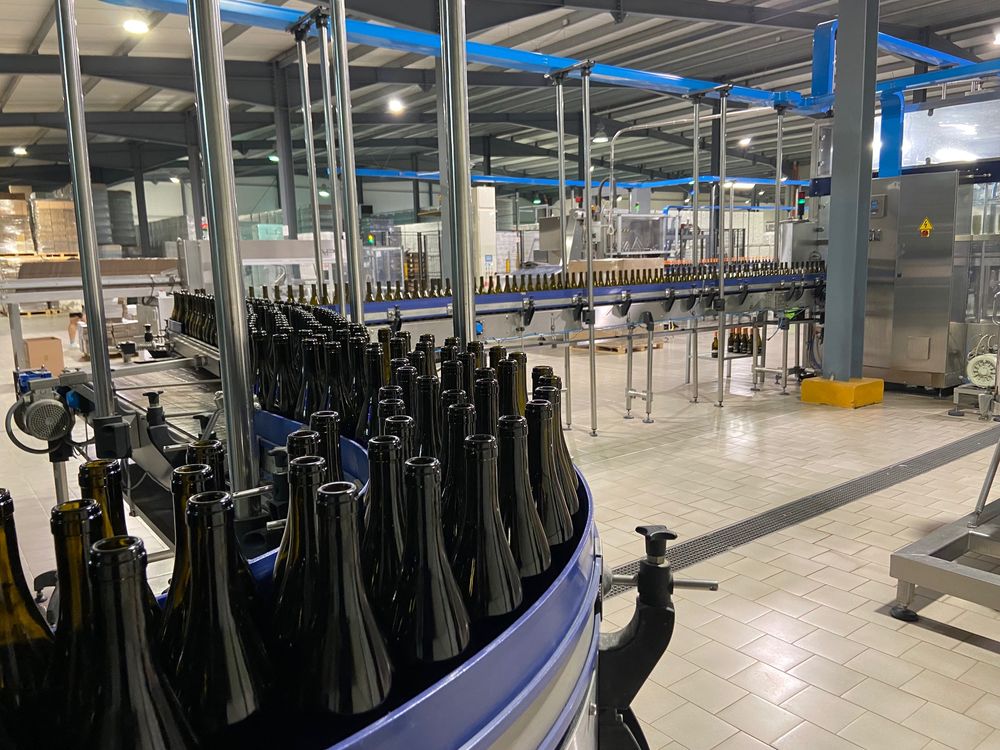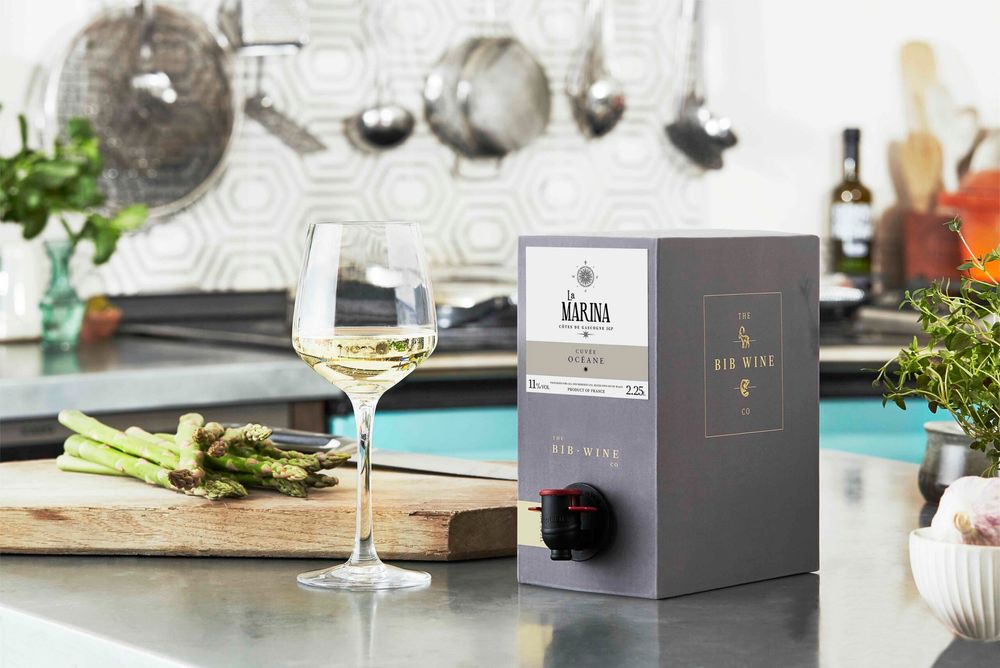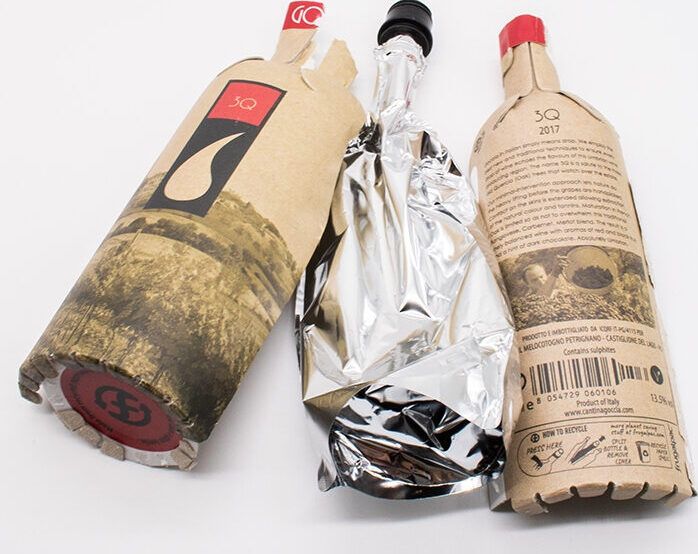Alternative packaging is nothing new in the wine sector, but after many false dawns there is now real momentum behind a growing sector driven by packaging solutions that also offer quality, premium wine, says Kate Hawkings.
This year’s extreme weather shocked many; for winemakers around the world it came as no surprise. As temperatures broke all records and drought threatened vineyards across Europe, Australia and New Zealand were battling with unprecedented, potentially catastrophic rainfall, and wildfires raged across California; all the result of climate change, largely wrought by carbon emissions, that has led to warming temperatures and increasingly erratic weather events over recent years and which pose very real threats to the wine industry everywhere.

Drought in vineyards is becoming a problem the world over
“I fear that in 10 or 20 years, this region will look like north Africa,” said Giovanni Pasqua forlornly as we toured his parched vineyards in Soave last July when Italy was in the grip of its worst drought on record. “Within a few years, it may no longer be possible to make wine here,” he added, bluntly. He is not alone.
‘Sustainability’ has become a welcome buzzword in the wine industry, with growing numbers of producers and distributors embracing initiatives to cut their carbon emissions, as well as employing regenerative agriculture and other practices to improve soil health and fix more carbon in the ground.
While a certain amount of ‘greenwashing’ goes on, many of these projects are wholly admirable and deserve applause, but it is becoming increasingly obvious that the elephant in the climate change room here is the use of glass bottles.
The manufacture and transport of glass bottles account for up to 68% of the carbon footprint of wine – only does glass take huge amounts of energy to produce, its weight adds significantly to the carbon emissions of its transport. While there have been some moves towards using lighter bottles, there seems to be little appetite to discuss any meaningful widespread alternative to packaging. However, this year has forced producers to focus on glass like never before.

The vast majority of all wine is still packaged in glass and does not look like making any dramatic changes any time soon
Supplies of glass bottles from plants in Ukraine and Russia have been halted by the war, just when demand began to soar as economies restarted after covid. At the same time, powerful beer and cola companies muscled into the glass market as they move away from plastic to glass packaging. Then, of course, there’s the crisis in energy costs.
“We’ve seen price increases of around 65% on bottles since the start of the year,” says Philip Cox of Cramele Recas, Romania’s largest winery which has a 50 million-bottle-a year output. “Worse, we are having to slow production and sales because we can’t get enough bottles, and it’s the same all over Europe.”
Cramele Recas is looking to take steps of its own and earlier this year launched a trial for recycled PET multibarrier bottles with customers in Germany where it placed the plastic and glass bottles side by side to see what the consumer response would be. The trial is on-going but the early signs are “promising” in terms of consumer acceptance of the PET bottles. If successful Cramele Recas estimates it would see a time reduction in carbon emissions transporting the PET bottles to market, depending on which mode of transport is used.
Cox says: “It’s going better than I thought, in the sense that all wineries can use these bottles with minimal change to their bottling lines, and there are no quality issues.”
US producers are also suffering, according to Eric Asimov in The New York Times. “Many producers over the last couple of years have reported difficulties obtaining bottles and complained about higher costs,” he writes. “Along with the pandemic supply-chain problems, bottles from China, a major source for the United States, have been subject to 25% tariffs since 2018.”
“It’s an urgent matter for all wineries to look hard and find what alternatives there are,” says Cox.
What are the alternatives?
Alternative, more sustainable, formats have been around for some time, of course, most noticeably bag-in-box (BIB) and cans. Both offer significant savings on carbon emissions in their manufacture and transport, but both come with their intrinsic problems when it comes to consumer appeal.
Bag in box

The BIB Wine Company is one of a number of wine businesses now looking to offer premium wines in alternative formats like bag in box
With the exception of Scandinavia, where more than 50% of wine is sold in BIB (although recent figures show that dipping), consumers worldwide are still reluctant to embrace these formats for their everyday drinking (although, interestingly, the French are more likely to use BIB than the snotty Brits). There is a persistent perception that wine not packaged in glass is of inferior quality despite the fact that, while this may have been true in the past, we’ve recently seen some really decent wine packaged in BIBs and cans.
Perhaps it goes beyond the actual wine contained in the package.Wine is all about sensuous pleasure, and that includes the enjoyment of opening and pouring from a bottle as well as the aromas and taste of what’s in the glass. BIBs are generally awkward to store (especially whites in the fridge) and clumsy to use, no matter how attractive their branding, and while cans are brilliant for trains, planes and picnics, most of us wouldn’t dream of plonking them down for our guests at a dinner table.
So what are the alternatives? Recycled (and recyclable) plastic bottles made from discarded plastic salvaged from places as diverse as the Danube River (Cramele Recas’ source for its PET bottles) and beaches in Bali are catching the eyes of several large producers around the world.
These bottles use far less energy to produce than glass, are much lighter so more energy efficient to transport, and are removing pre-used plastic already cluttering up the environment. They also offer an impressive two to three year shelf life for wine once bottled.
Flat bottles

Accolade and Packamama’s flat bottle packaging
In 2020, Accolade Wines, teamed up with Packamama (the packaging business that has come out of Garcon Wines) to launch its Banrock Station wines in flat bottles made from 100% recycled PET (polyethylene terephthalate) plastic bottles. “The initial uptake was so strong that we ran out of stock after our first production,” says Sandy Mayo, Accolade’s chief marketing officer. “We fast-tracked a second production run and increased our production volumes by more than 50%.”
Other, more premium producers, are following suit. Eyebrows were raised earlier this year when LVMH-owned Château Galoupet launched a quality rosé packaged in flat PET bottles. It’s a brave move, led by Jessica Julmy the MD at Galoupet whose eco-credentials include bottling its top cuvée in a brown bottle made from 70% recycled glass.
Paper bottles
Paper bottles are also creating a stir and, to my mind, seem to have the most exciting future. In June 2020, Ipswich-based Frugalpac launched the world’s first (and only) bottle made from paper. Essentially, it’s a BIB but in the shape of a normal wine bottle. Made from 94% recycled (and recyclable) paperboard with a recyclable liner, it’s around a fifth the weight of a glass bottle, has a sixth of its carbon footprint and, crucially, is pleasingly tactile to use and to hold. Also, the whole of the outside of the bottle can be printed, giving the producer scope to include much more information than on a standard bottle label.

When in Rome is now using innovative packaging technology to offer premium Italian wine in a paper bottle
Cantina Goccia in Italy were the first winery on board, using Frugal Bottles for its 3Q range of estate-bottled wine, and for the contract bottling it does for British BIB pioneers When In Rome.
Over 2 million of these bottles have been made so far this year in the UK, with a further 2.5m rolling off an assembly machine in Canada, and more due to come as Frugalpac has already had enquiries to order 120 million bottles from more than 80 brands around the world. Over 25 producers already use the bottles for wine, spirits and olive oil, including a very good Bacchus from English Vine now on the market via Laithwaites, Greenhall’s Original London Dry Gin (launched last month) and Buen Vato tequila, all of which have recently reordered them.
They are also used by new South African wine brand Interpunkt, owned by Andrew Ingham incollaboration with Rollo Gabb of Journey’s End in South Africa. “If I wanted to create a new wine brand then why would I make it out of glass? Any new wine brand has to have sustainability at its heart,” says Ingham in The Buyer’s profile on the business. “We are a new proposition with a different mindset. That’s what is so appealing about the cardboard bottle. It can appeal to anyone and bring people into wine,” he adds. (Click here to read the full Interpunkt article).

Interpunkt: a brand with an attitude and a purpose. All in a paper bottle too…
In addition, Frugalpac has just announced a new partnership with French wine distributor Somewhere in Provence who is offering contract bottling as France’s first filler of the Frugal Bottle, with the capacity to fill over 1m bottles a year.
“Our aim is to place Frugal Bottle assembly machines at the heart of wine and spirits regions so we can reduce the carbon footprint of our sustainable packaging even further and have Frugal Bottle hubs around the world,” says Frugalpac, chief executive, Malcolm Waugh.
Unit costs are still higher than glass bottles, but as the production is scaled up, these are bound to come down, and anyway spiralling glass costs are making them more competitive. Shelf life of wine is safe for up to 18 months, which is plenty of time for the 90% of wine that is drunk within a year of bottling.
“They say desperate times create innovation,” says Philip Cox. “I am looking at all the options and if I can get my customers to buy any of them I will make changes very quickly.”
Therein lies the rub: I spoke to several other producers from various countries, all of whom are making much of their sustainability credentials yet none are yet considering moving away from glass, concerned that alternatives will cheapen the perception of their brands. Most are still bottling their top cuvées in heavyweight bottles because “that’s what the market expects”.

Spirits brands in paper bottle packaging could potentially help consumers accept the wider use of them across wine and spirits
And yet we are told that consumers, particularly the younger generation, are increasingly concerned by the environmental consequences of the things they buy, which suggests there is an eager market to be tapped.
From my entirely unscientific market research, I wonder if there’s a disconnect between what producers and most consumers feel about paper bottles. Certainly all the non-wine-industry friends I’ve shown Frugal Bottles to are unanimously in favour of them and say they would absolutely choose buying them over glass if they had the option.
While nobody is suggesting that serious wines made for ageing are bottled in anything but glass, if we wish to make any meaningful reduction on wine’s impact on climate change, surely it is now incumbent on producers to look to alternative packaging for the vast majority of wine, and on consumers to embrace them widely.
- What do you think? The Buyer invites those who would like to share their thoughts and what actions they are taking on alternative packaging for wine and spirits to contact Richard Siddle on richardsiddle5@gmail.com.










































